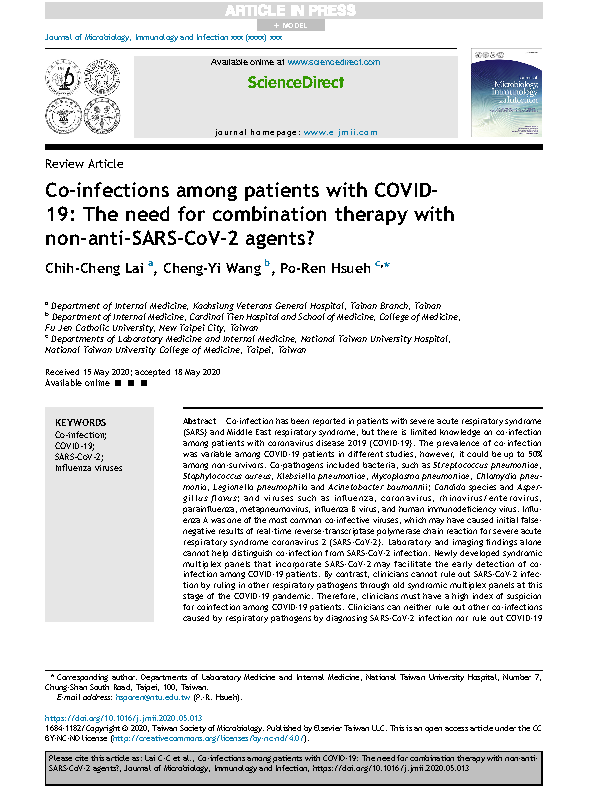16 June Co-infections among patients with COVID-19: The need for combination therapy with non-anti-SARS-CoV-2 agents?
Chih-Cheng Lai, Cheng-Yi Wang, Po-Ren Hsueh

ABSTRACT
Cases of coinfection have been reported in patients with severe acute respiratory syndrome (SARS) and Middle East respiratory syndrome, but there is limited knowledge about coinfection among patients with coronavirus disease 2019 (COVID-19).
The prevalence of co-infection was variable among COVID-19 patients in different studies, however, it could be up to 50% among non-survivors.
Copathogens included bacteria, such as Streptococcus pneumoniae, Staphylococcus aureus, Klebsiella pneumoniae, Mycoplasma pneumoniae, Chlamydia pneumoniae, Legionella pneumophila and Acinetobacter baumannii; species of Candida y Aspergillus flavus; and viruses such as influenza, coronavirus, rhinovirus/enterovirus, parainfluenza, metapneumovirus, influenza B virus, and human immunodeficiency virus:
- Influenza A was one of the most common coinfecting viruses, which may have caused initial false-negative real-time reverse transcriptase polymerase chain reaction results for severe acute respiratory syndrome coronavirus 2 (SARS-CoV-2). .
Laboratory and imaging findings alone cannot help distinguish co-infection from SARS-CoV-2 infection. Newly developed syndromic multipanels incorporating SARS-CoV-2 may facilitate early detection of co-infection among COVID-19 patients. In contrast, clinicians cannot rule out SARS-CoV-2 infection by monitoring other respiratory pathogens through the former syndromic multiple panels at this stage of the COVID-19 pandemic. Therefore, clinicians should have a high index of suspicion for co-infection among COVID-19 patients. Clinicians cannot rule out other co-infections caused by respiratory pathogens when diagnosing SARS-CoV-2 infection nor rule out COVID-19 by detecting non-SARS-CoV-2 respiratory pathogens. After recognizing potential pathogens causing co-infection among COVID-19 patients, appropriate antimicrobial agents may be recommended.


